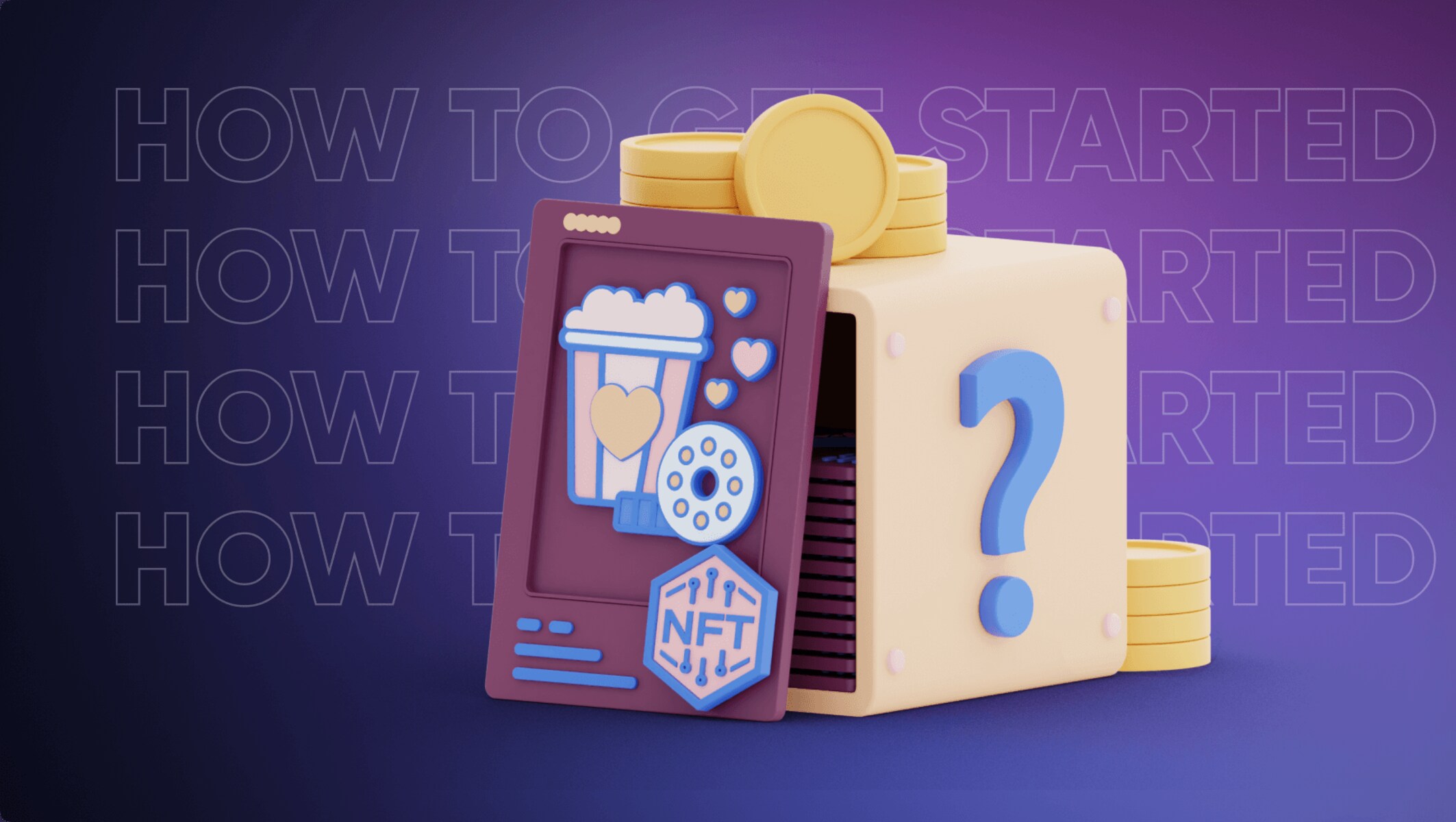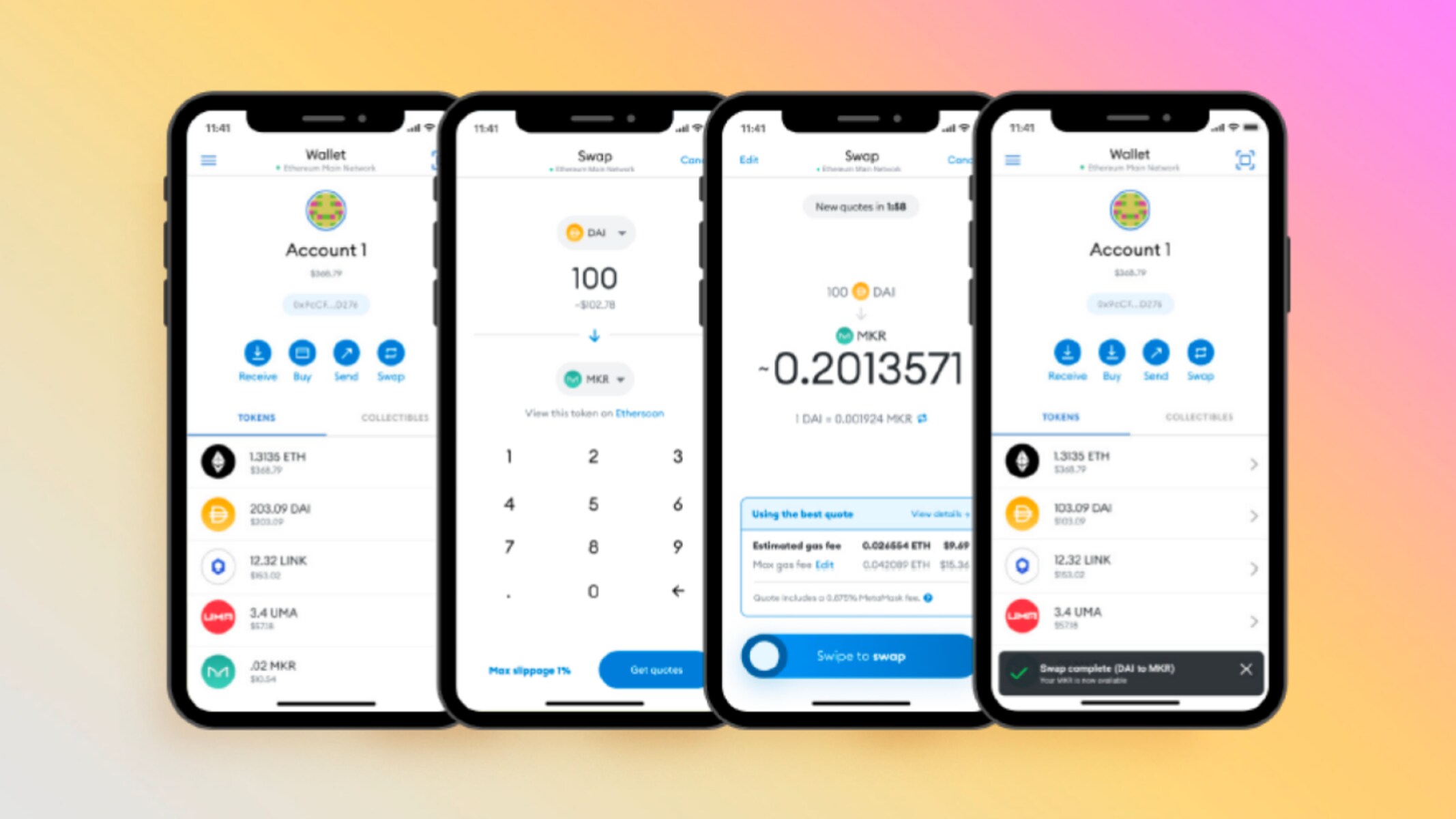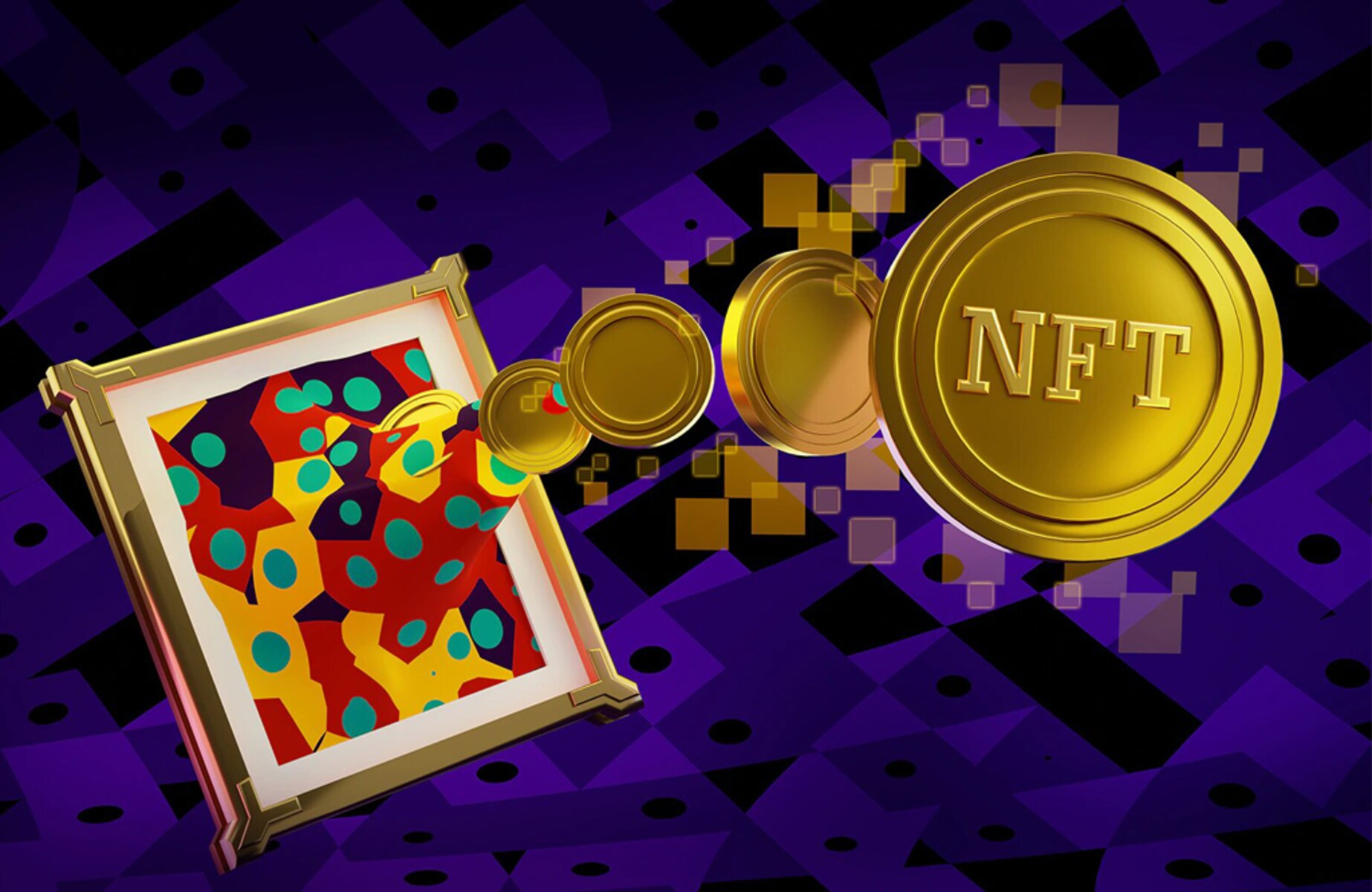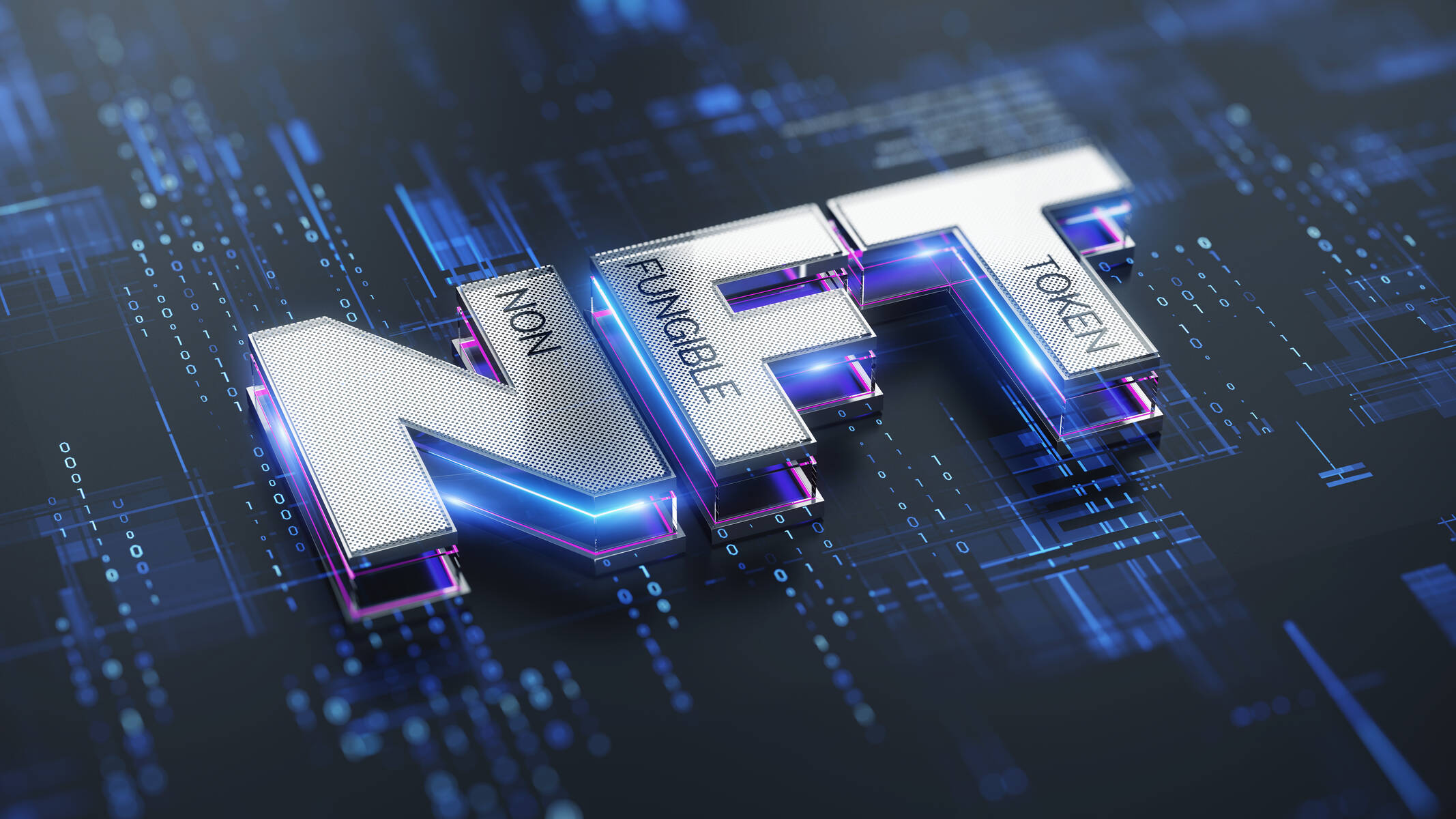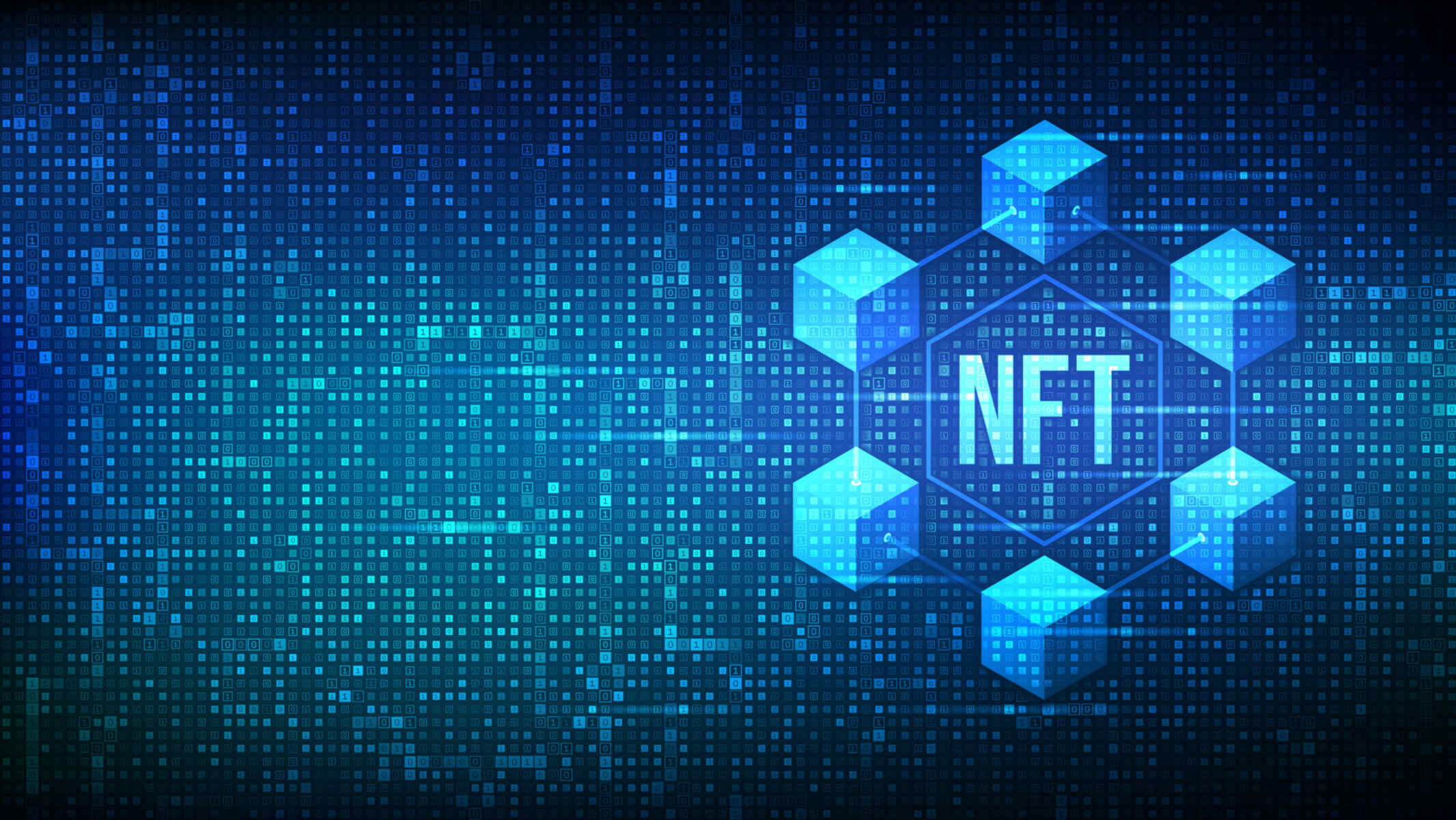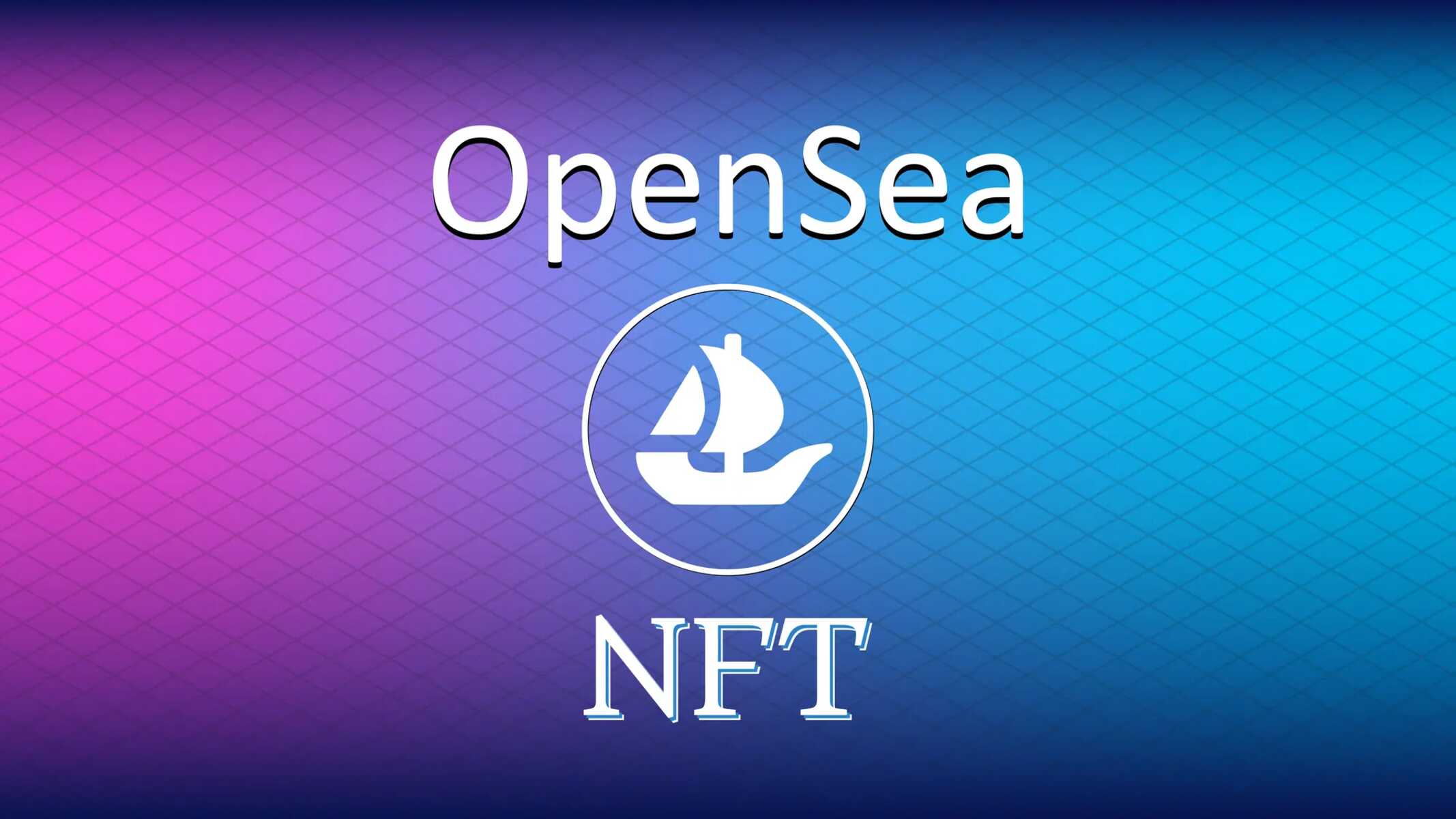What is NFT?
NFT, or Non-Fungible Token, has been making headlines and capturing the attention of artists, collectors, and investors alike. But what exactly is an NFT? In simple terms, it is a unique digital asset that is stored on a blockchain. Unlike cryptocurrencies such as Bitcoin or Ethereum, which are fungible and can be exchanged on a one-to-one basis, NFTs are indivisible and cannot be exchanged on a like-for-like basis.
The key characteristic of an NFT is its uniqueness. Each NFT contains metadata that distinguishes it from any other token, including information about its creator, its ownership history, and its properties. This uniqueness makes NFTs ideal for representing ownership and provenance of digital items like artwork, music, videos, virtual real estate, and even digital collectibles.
One of the main benefits of NFTs is that they establish verifiable ownership of digital assets. In the past, it was challenging to prove the authenticity and ownership of digital creations. NFTs solve this problem by using blockchain technology, which provides a transparent and tamper-proof record of transactions. This means that artists can now sell their digital creations directly to buyers, cutting out intermediaries and ensuring that their work is properly attributed and compensated.
Furthermore, NFTs have introduced a new way for creators to monetize their work. By tokenizing their digital assets as NFTs, artists can sell limited editions or even create auction-style sales, allowing collectors to bid on one-of-a-kind pieces. This has opened up a world of possibilities for creators to showcase and sell their work directly to a global audience, bypassing traditional art galleries or auction houses.
It’s important to note that NFTs have also brought about a cultural shift in how we perceive ownership of digital content. With NFTs, collectors can have a verifiable claim of owning a unique digital item, creating a sense of rarity and exclusivity. This has led to a surge in the popularity of digital collectibles, where unique virtual items such as trading cards, virtual pets, and in-game assets can be bought, sold, and traded among enthusiasts.
In summary, NFTs offer a new and exciting way to buy, sell, and own digital assets. They provide a means for creators to monetize their work, establish provenance and ownership, and give collectors the thrill of owning unique pieces of digital content. As the world becomes increasingly digital, NFTs represent a paradigm shift in how we interact with and value digital creations.
Why should you care about NFTs?
Non-Fungible Tokens (NFTs) have been making waves in the digital world, but you might be wondering why you should care about them. Well, there are several reasons why NFTs have garnered so much attention, and it’s worth exploring why they are relevant and potentially valuable to you.
First and foremost, NFTs offer a unique opportunity for creators to monetize their digital work. If you’re an artist, musician, writer, or any type of digital content creator, NFTs provide a new revenue stream that was previously unavailable. By tokenizing your creations as NFTs, you can sell them directly to buyers, eliminating the need for intermediaries such as galleries or agents. This allows you to retain more control over your work and potentially earn more money from it.
Additionally, NFTs have the potential to revolutionize the concept of ownership in the digital realm. With traditional digital files, it’s challenging to prove ownership or authenticity, which can lead to issues like piracy and unauthorized use. NFTs solve this problem by utilizing blockchain technology, which provides an unalterable record of transactions. This means that when you purchase an NFT, you have a verifiable and unique claim of ownership to a specific digital asset. This newfound sense of ownership opens up exciting possibilities for collectors and enthusiasts.
Furthermore, NFTs allow for new ways to engage with digital content. With the rise of virtual worlds and metaverses, owning unique and scarce digital assets has become increasingly valuable. Imagine owning a piece of virtual real estate, a limited-edition virtual item, or an exclusive in-game asset. NFTs make these virtual possessions possible, creating a sense of exclusivity and status within digital ecosystems. Whether you’re an avid gamer or someone interested in exploring virtual worlds, NFTs offer a gateway to a new level of digital immersion and interaction.
From an investment perspective, NFTs have also shown significant potential for value appreciation. While the value of individual NFTs can be subjective and speculative, the growing interest and demand for these digital assets have led to skyrocketing prices in some cases. Early adopters and collectors who have purchased rare or highly sought-after NFTs have seen their investments multiply in value. However, it’s essential to approach NFT investments with caution and conduct thorough research before diving in.
In summary, NFTs offer compelling benefits for creators, collectors, and enthusiasts alike. From opening up new revenue streams for creators to revolutionizing ownership in the digital realm, NFTs provide a unique and exciting way to engage with and value digital content. Whether you’re an artist looking for new opportunities, a collector seeking unique digital possessions, or simply curious about the evolving digital landscape, NFTs are worth paying attention to. Their impact on the future of art, culture, and technology is undeniable, and the possibilities they bring are endlessly fascinating.
Understanding the basics of NFTs
To fully grasp the concept of Non-Fungible Tokens (NFTs), it’s important to dive into the basics. NFTs have gained significant attention for their unique properties and potential applications. Here, we will explore the fundamental aspects of NFTs and shed light on what sets them apart from traditional cryptocurrencies.
At its core, an NFT is a type of digital asset that represents ownership or proof of authenticity of a unique item or piece of content. Unlike cryptocurrencies like Bitcoin or Ethereum, which are fungible and can be exchanged on a one-to-one basis, NFTs are indivisible and cannot be exchanged or replicated in the same way. Each NFT is unique and holds metadata that distinguishes it from any other token.
The underlying technology powering NFTs is blockchain, specifically the Ethereum blockchain. Blockchain is a decentralized and transparent ledger that records every transaction made with a particular cryptocurrency or, in this case, an NFT. This technology ensures the integrity and immutability of the ownership records, making it nearly impossible to tamper with or duplicate NFTs.
One of the essential components of an NFT is its metadata. This metadata contains information about the creator, ownership history, and characteristics specific to the digital asset it represents. For example, if an NFT represents a piece of artwork, the metadata might include details about the artist, the medium used, and even interactive elements associated with the artwork.
The scarcity and uniqueness of NFTs also contribute to their appeal. In many cases, creators issue limited editions or one-of-a-kind NFTs, with only a certain number available for purchase. This scarcity adds value and exclusivity to the digital asset, making it highly sought after by collectors and enthusiasts.
Another key aspect of NFTs is their programmability. Smart contracts, which are self-executing contracts with the terms of the agreement directly written into lines of code, are used to govern the behavior and functionality of NFTs. This means that creators can embed specific rules or instructions into the NFT, such as royalty fees that are automatically paid to the original creator whenever the NFT is sold in the secondary market.
It’s important to note that while NFTs have gained popularity in the art world, their utility extends far beyond that. NFTs can represent various forms of digital content, including music, videos, virtual real estate, virtual items in video games, and even domain names. The possibilities for NFTs are virtually endless, and their adoption has led to the emergence of vibrant NFT marketplaces and innovative use cases across different industries.
In summary, NFTs are unique digital assets that are stored on the blockchain. They represent ownership or authenticity of a specific item or content and are distinguishable from other tokens. NFTs leverage blockchain technology to ensure transparency, security, and provenance. Their scarcity, programmability, and diverse application possibilities make NFTs an exciting development in the world of digital assets with the potential to revolutionize ownership and the way we engage with digital content.
Choosing the right NFT platform
With the rise of Non-Fungible Tokens (NFTs), the demand for NFT platforms has increased significantly. These platforms serve as marketplaces where creators can mint and sell their NFTs, and collectors can discover and purchase unique digital assets. But with an abundance of options available, how do you choose the right NFT platform for your needs? Here are some key factors to consider:
1. Reputation and Trustworthiness: It’s essential to choose a reputable and trustworthy NFT platform. Look for platforms with a proven track record of successful transactions and positive user reviews. Do your research, read testimonials, and check if the platform has experienced any security issues in the past.
2. User Experience: A user-friendly interface and intuitive navigation can greatly enhance your experience on an NFT platform. Look for platforms that offer smooth onboarding processes, easy artwork upload and management, and straightforward purchasing options. A platform that prioritizes user experience will make your journey as a creator or collector more enjoyable.
3. Platform Fees: Different NFT platforms have varying fee structures, often involving transaction fees and gas fees (fees for blockchain transactions). Consider the cost of minting and listing your NFTs, as well as the fees associated with buying and selling. Compare the fee structure among platforms to ensure it aligns with your budget and goals.
4. Community and Exposure: Look for NFT platforms with an active and engaged community. Platforms with a strong community often provide opportunities for networking, collaboration, and exposure. A vibrant community can help you gain visibility for your creations and connect with like-minded individuals.
5. Curation and Discovery: Consider how NFTs are curated and showcased on the platform. Some platforms have strict curation processes to ensure quality and uniqueness, while others have more open and decentralized approaches. Additionally, evaluate how easy it is for potential buyers to discover and explore NFTs within the platform’s marketplace.
6. Secondary Market Support: Take into account whether the platform supports a secondary market for NFTs. A secondary market allows for reselling and trading NFTs, potentially increasing their value and providing liquidity for collectors. A robust secondary market can be crucial if you plan to sell or trade your NFTs in the future.
7. Platform Ethereum Compatibility: Most NFTs are currently built on the Ethereum blockchain. Ensure that the platform you choose is compatible with the Ethereum network, as this will enable seamless transactions and interactions with the broader NFT ecosystem.
Ultimately, the right NFT platform for you will depend on your specific goals, preferences, and the type of digital assets you plan to create or collect. Take the time to research and explore different platforms, considering the factors mentioned above. By choosing the right NFT platform, you can maximize your opportunities for success in the vibrant and evolving world of NFTs.
Creating your own NFT
Creating your own Non-Fungible Token (NFT) is an exciting opportunity to showcase your digital creations and potentially monetize your work. Here, we’ll explore the steps involved in creating your own NFT and bringing your unique digital assets to the NFT marketplace.
1. Target a digital asset: Determine the digital asset you want to turn into an NFT. It could be artwork, music, videos, virtual real estate, or any other form of digital content. Ensure that you have the rights and permissions to use and sell the asset as an NFT.
2. Choose an NFT platform: Select an NFT platform that aligns with your needs and goals. Look for platforms that support the type of digital asset you’re creating and offer the features and exposure you desire. Popular NFT platforms include OpenSea, Rarible, and Foundation.
3. Set up a digital wallet: Set up a digital wallet that is compatible with the platform you’ve chosen. Many NFT platforms operate on the Ethereum blockchain, so you’ll typically need an Ethereum-compatible wallet like MetaMask or Trust Wallet. Create and secure your wallet to ensure the safety of your NFTs and transactions.
4. Mint your NFT: Minting is the process of creating and assigning a unique token to your digital asset. On the NFT platform, you’ll typically find a minting option where you can upload your digital files, add relevant metadata, and set parameters such as royalty percentages and rarity traits. After minting, your digital asset will be transformed into a unique NFT on the blockchain.
5. Set a price and list your NFT: Determine the price you want to set for your NFT. Consider factors such as the demand for your digital asset, your reputation as a creator, and the perceived value of your work. Once you’ve set the price, list your NFT on the marketplace. Include an engaging description and high-quality visuals to attract potential buyers.
6. Promote your NFT: Promote your NFT on social media, art communities, and relevant platforms to increase its visibility. Utilize hashtags, collaborate with other artists, and engage with potential buyers to build awareness and interest in your NFT. Networking and community engagement can play a significant role in the success of your NFT.
7. Manage your NFT: Regularly monitor the performance of your NFT on the marketplace. Keep track of sales, collect royalties if applicable, and stay engaged with your buyers and collectors. Consider attending NFT events and participating in collaborations to expand your reach and network within the NFT community.
Remember, creating an NFT is just the beginning. Consistency, creativity, and engagement are crucial for achieving success in the dynamic world of NFTs. Embrace the opportunity to express your creativity, connect with a global audience, and potentially earn recognition and financial rewards for your digital creations.
Buying your first NFT
Buying your first Non-Fungible Token (NFT) can be an exhilarating experience, as it grants you ownership of a unique piece of digital content. However, navigating the world of NFTs requires some research and careful consideration. Here’s a guide to help you purchase your first NFT and become a part of the growing community of digital collectors.
1. Educate yourself: Familiarize yourself with the NFT space and different platforms available. Learn about the types of digital assets available as NFTs, understand the terminology, and explore various marketplaces to discover artists you resonate with. This research will equip you with the knowledge necessary to make informed decisions.
2. Choose a reputable platform: Select a reputable NFT marketplace to ensure the authenticity and quality of the NFTs available. Look for platforms with a strong track record, positive user reviews, and active community engagement. Popular NFT platforms include OpenSea, SuperRare, and Nifty Gateway.
3. Set up a digital wallet: Create a digital wallet compatible with the marketplace you choose. Most platforms operate on the Ethereum blockchain, necessitating an Ethereum-compatible wallet like MetaMask or Trust Wallet. Set up and secure your wallet by following the platform’s instructions.
4. Establish a budget: Determine how much you are willing to spend on your first NFT. It’s important to set a budget and stick to it to avoid overspending. Remember that prices for NFTs can vary widely, depending on factors such as the reputation of the artist, rarity, and demand for the asset.
5. Explore and discover: Take the time to explore different NFTs available on the marketplace. Browse through various categories, such as artwork, music, or virtual collectibles, and discover artists and creators you resonate with. Follow their work, engage with the community, and stay informed about upcoming releases and drops.
6. Research potential purchases: Before buying an NFT, conduct thorough research on the artist and the specific artwork. Look into their portfolios, backgrounds, and past sales to gain insight into their reputation and market value. Pay attention to the historical performance of their NFTs and assess whether the price aligns with your perception of value.
7. Bid or make a purchase: Once you have found an NFT that you are interested in, you can either make a direct purchase or participate in an auction or bidding process. Follow the provided instructions on the platform to complete the transaction. Ensure that you are comfortable with the terms, including any additional fees or royalties associated with the NFT.
8. Store and manage your NFT: After purchasing an NFT, transfer it to your digital wallet for safe storage. Make sure to follow the platform’s instructions for transferring ownership. Keep track of your NFTs and their ownership records to maintain a clear record of your collection.
Buying your first NFT can be an exciting and rewarding experience. By conducting research, setting a budget, and exploring the vast array of digital assets available, you can find unique pieces of art and support talented creators. Embrace the opportunity to be part of the NFT revolution and enjoy the ownership and connection to digital art and culture that NFTs provide.
Storing and managing your NFT collection
Once you start buying Non-Fungible Tokens (NFTs), it’s essential to have a plan for storing and managing your growing collection. As digital assets, NFTs require proper storage to ensure their safety and accessibility. Here are some key considerations for storing and managing your NFT collection effectively.
1. Choose a secure digital wallet: Select a secure digital wallet compatible with the blockchain network on which your NFTs are based. Popular wallet options for Ethereum-based NFTs include MetaMask, Trust Wallet, and MyEtherWallet. It’s crucial to choose a wallet with robust security features, such as two-factor authentication and encryption, to protect your NFTs from unauthorized access.
2. Back up your wallet: Regularly back up your digital wallet to prevent the loss of your NFTs. Wallet backups typically involve saving your private keys or recovery phrases in a secure offline location. This ensures that even if your computer or device is compromised, you can restore access to your NFTs using the backup.
3. Organize and categorize: As your NFT collection grows, it’s crucial to develop a system for organizing and categorizing your assets. Consider creating folders, tags, or playlists within your wallet or using external tools like spreadsheets or portfolio trackers to keep track of the specific details of each NFT. This organization will make it easier to manage and navigate your collection.
4. Monitor the market value: Keep tabs on the market value of your NFTs to stay informed about their potential worth. Track sales data, follow relevant marketplaces, and observe the trends and demand for the artists or projects associated with your NFTs. This information will help you assess the value of your collection and make informed decisions about buying, selling, or holding your NFTs.
5. Stay up to date with the community: Engage with the NFT community, attend events, and join relevant forums or social media groups. Participating in the community will enable you to stay informed about updates, industry news, and upcoming releases. Networking with other collectors and artists can also provide valuable insights and opportunities for collaboration.
6. Maintain proper documentation: Keep a record of important information related to your NFT collection, such as purchase receipts, ownership records, and any additional agreements or contracts associated with your NFTs. This documentation can be helpful for future reference, provenance validation, or any potential disputes or inquiries that may arise.
7. Consider offline storage: For added security, consider storing a backup of your NFTs offline, in what is known as cold storage. This involves creating a separate digital wallet that is not connected to the internet and securely storing the private keys or recovery phrase. Cold storage provides an extra layer of protection against online threats.
By following these storage and management best practices, you can ensure the safety and accessibility of your NFT collection. Regularly review and update your storage strategies as new technologies and security measures evolve in the NFT space. Stay proactive and engaged in managing your collection to maximize the enjoyment and potential value of your NFTs.
Selling your NFTs
As a collector of Non-Fungible Tokens (NFTs), you may eventually decide to sell some of your digital assets. Selling NFTs can be an exciting opportunity to connect with buyers, monetize your collection, and potentially realize a return on your investment. Here are some key considerations and steps to follow when selling your NFTs.
1. Choose the right marketplace: Select a reputable NFT marketplace to list and sell your NFTs. Consider platforms such as OpenSea, Rarible, or SuperRare, which have established user bases and offer a wide range of NFTs. Research and compare marketplace fees, audience reach, and user experience to find the platform that best aligns with your goals and target market.
2. Set a fair price: Determine an appropriate price for your NFT based on factors such as its perceived value, rarity, artist recognition, and market demand. Conduct research to evaluate similar NFTs sold recently and gauge the current market trends. Pricing your NFT competitively can attract potential buyers and increase the likelihood of a successful sale.
3. Create an engaging listing: Craft a compelling and informative listing for your NFT. Include high-quality visuals, a detailed description, and relevant metadata, such as the background and inspiration behind the artwork, music, or digital content. Utilize keywords and tags to enhance discoverability and engage potential buyers effectively.
4. Promote your NFT: Market your NFT beyond the marketplace to expand your reach and attract potential buyers. Leverage social media platforms, online communities, and your existing network to showcase your NFTs. Engage with the NFT community, participate in discussions, and collaborate with other artists or collectors to boost your visibility.
5. Consider auctions or timed sales: Explore auction-style sales or timed releases to create a sense of urgency and excitement around your NFTs. Auctions can generate competitive bidding and potentially drive up the final sale price, while timed sales create a limited window for buyers to make a purchase, increasing the exclusivity of your NFTs.
6. Engage with potential buyers: Respond promptly and professionally to inquiries or offers from potential buyers. Provide additional information about your NFT if requested and be open to negotiating prices or terms if appropriate. Building positive relationships with potential buyers can lead to successful transactions and potentially facilitate future sales.
7. Complete the transaction: Once a buyer has expressed interest and agreed to the purchase, follow the marketplace’s instructions to finalize the transaction. Ensure that the buyer completes the payment and that you transfer the ownership of the NFT securely. Double-check all details, such as the wallet addresses, to avoid any errors or missteps during the transaction process.
8. Maintain documentation: Keep a record of the sale, including transaction details, receipts, and any additional agreements or contracts associated with the sale of your NFTs. This documentation can be valuable for future reference, provenance verification, or any potential concerns or disputes that may arise.
Selling your NFTs can be a rewarding experience that allows you to connect with buyers, showcase your collection, and potentially earn a profit. By following these steps and employing effective marketing strategies, you can maximize your chances of successfully selling your NFTs and contributing to the vibrant marketplace of digital assets.
NFTs and blockchain technology
Non-Fungible Tokens (NFTs) have gained widespread attention and popularity due to their connection to blockchain technology. Blockchain, often associated with cryptocurrencies like Bitcoin, plays a vital role in creating and validating the uniqueness, ownership, and provenance of NFTs. Let’s explore how NFTs and blockchain technology are intertwined.
Blockchain is a decentralized and transparent digital ledger that records transactions across multiple computers. NFTs are built on blockchain platforms, primarily the Ethereum blockchain. The blockchain ensures the immutability and security of NFT ownership records, making it nearly impossible to alter or counterfeit these unique digital assets.
The use of blockchain in the creation and management of NFTs addresses a fundamental problem in the digital realm – proving ownership and authenticity. In the past, digital art, music, or other forms of digital content could be easily reproduced and plagiarized without a reliable method of verifying originality. NFTs solve this problem by leveraging blockchain’s capability to provide transparent and tamper-proof records of ownership and transactions.
When an NFT is created, it is assigned a unique token ID and stored as a transaction on the blockchain. This transaction contains metadata that describes the NFT, such as its creator, properties, and ownership history. This metadata ensures the authenticity and provenance of the NFT, making it possible to trace its creation and ownership back to the original creator.
Blockchain technology also introduces the concept of smart contracts to NFTs. Smart contracts are self-executing agreements written in code that automatically execute certain actions based on predetermined conditions. In the context of NFTs, smart contracts govern the behavior and functionality of the token. For example, a smart contract can be programmed to automatically distribute royalties to the original creator whenever the NFT is resold in the secondary market.
The decentralized nature of blockchain technology is another advantage for NFTs. Unlike centralized platforms where intermediaries have control over transactions and ownership, blockchain allows for peer-to-peer transactions without the need for trusted third parties. This decentralization ensures that ownership and transactions are verified by the network rather than relying on a single entity.
Furthermore, blockchain technology provides transparency and auditability to the NFT ecosystem. Every transaction, from the creation of an NFT to its subsequent sale or transfer, is recorded on the blockchain. This transparency allows for the public verification of ownership and enhances trust within the NFT marketplace. It also enables collectors and investors to assess the provenance and historical data of NFTs before making a purchase.
In summary, blockchain technology underpins the authenticity, security, and provenance of Non-Fungible Tokens (NFTs). By utilizing blockchain, NFTs can provide verifiable ownership, protect against duplication or tampering, and enable transparent transactions. The combination of NFTs and blockchain technology has revolutionized the way we perceive and interact with digital assets, reshaping the art world, collectibles market, and various other industries. The future potential for NFTs and blockchain technology is vast, opening up exciting opportunities for creators, collectors, and investors.
Emerging trends in the NFT market
The world of Non-Fungible Tokens (NFTs) is constantly evolving, with new trends and developments shaping the market. As the popularity and adoption of NFTs continue to grow, several emerging trends are worth exploring. Let’s delve into some of the key trends that are currently shaping the NFT market.
1. Metaverse and virtual worlds: The concept of virtual worlds, also known as the metaverse, is gaining traction within the NFT space. NFTs are being used to represent virtual real estate, in-game assets, and even virtual identities. This trend opens up opportunities for users to engage with digital realms using unique and scarce digital assets, fueling the demand for NFTs in this space.
2. Integration with DeFi and staking: The integration of NFTs with decentralized finance (DeFi) is becoming increasingly prevalent. NFT owners can stake their tokens as collateral to earn passive income or access various financial services within the DeFi ecosystem. This trend combines the unique characteristics of NFT ownership with the utility and functionality of DeFi protocols.
3. Art collaborations and fractional ownership: Collaborative projects and fractional ownership of NFTs are gaining popularity. Artists come together to create unique collections or series of NFTs, allowing collectors to own a portion or fraction of the overall artwork. This trend enables broader access to high-value NFTs and fosters a sense of community and collaboration among artists and collectors.
4. NFT gaming and play-to-earn: NFTs are transforming the gaming industry by allowing players to truly own and trade in-game assets. Play-to-earn models are emerging, where players can earn NFTs or cryptocurrency by participating and succeeding in gameplay. This trend blurs the lines between gaming and finance, providing new opportunities for players to monetize their skills and investments.
5. Sustainable and carbon-neutral NFTs: Environmental concerns have prompted the emergence of sustainable NFTs. Artists, platforms, and collectors are exploring methods to reduce the carbon footprint associated with the minting and transactions of NFTs. This trend includes the use of environmentally friendly blockchain networks and offsetting emissions through various initiatives.
6. Utility-focused NFTs: NFTs are being integrated into real-world applications, providing utility beyond mere digital ownership. Examples include NFTs as access tokens to exclusive events, membership passes, or even digital identity verification. This trend expands the possibilities for NFTs beyond the art and collectibles space, unlocking their potential in different industries.
7. Licensing and intellectual property: With the rise of NFTs, discussions around intellectual property rights and licensing have become more prevalent. Artists and creators are exploring ways to tokenize and license their intellectual property, enabling them to retain control and monetize their work even in the digital realm. This trend raises important questions about ownership and the digital rights of artists and content creators.
As the NFT market continues to evolve, these emerging trends exemplify the dynamic and transformative nature of this space. From virtual worlds to sustainable initiatives and innovative use cases, NFTs are reshaping the way we think about digital ownership, creativity, and the intersection of technology and art. Keeping an eye on these trends can provide valuable insights and opportunities for collectors, artists, and investors in the ever-evolving landscape of NFTs.







